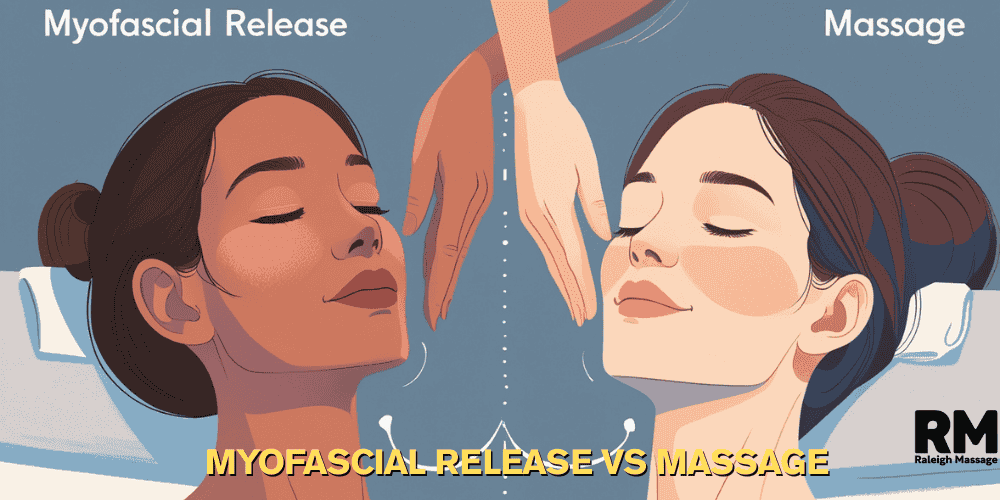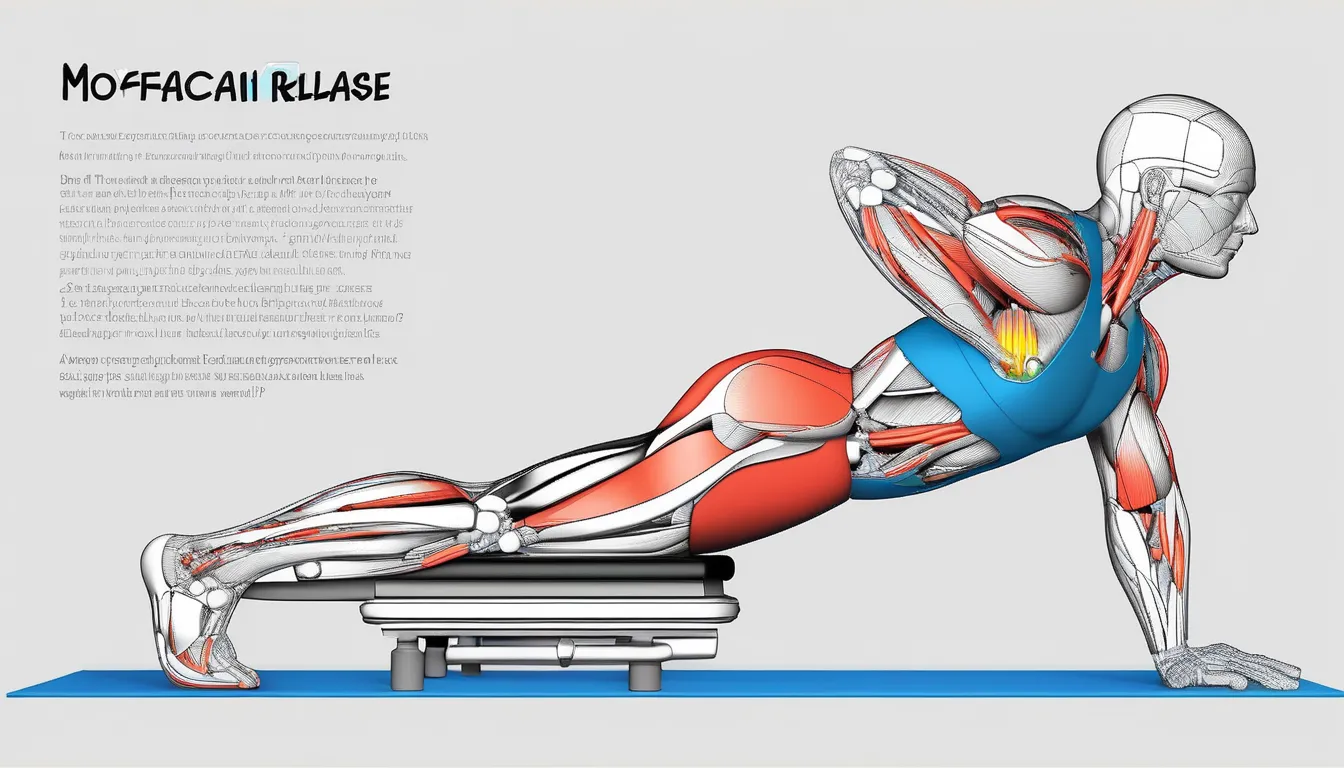I’ve long been interested in the many different approaches people use to ease pain, tension and stress. Stiff neck? Tight shoulders? Aches in the lower back that just won’t budge? Almost everything seems to have an answer. Myofascial release and massage are two possible options that are popular. But are they the same thing? Which one is better for your needs? Let’s explore the differences between myofascial release vs massage.
What is Myofascial Release?
I learned about myofascial release as I was struggling with some chronic back pain that wouldn’t go away. It’s a type of physical therapy that targets the release of tension in the fascia — the connective tissue that surrounds muscles across the body. If you’ve ever experienced a knot or a “trigger point” in a muscle, that’s generally where myofascial release applies.
Myofascial release seeks out areas of limitation in the fascia, and aims to stretch and release that tension. The process consists of applying gentle and then sustained pressure to a series of particular points on the body. It’s often a slow process, giving your body time to respond and ease the tension.
What is Massage?
You’re probably more familiar with massage. It manipulates the body’s muscles and soft tissues in a way that relieves tension, increases circulation and elasticizes and relaxes the body. There are many different kinds of massage — Swedish Massage, deep tissue Massage, hot stone Massage, etc. — but the general principle is working through pressure on muscles and connective tissue in a way that relieves stress and discomfort.
Massage is usually broader than myofascial release, and the whole experience can feel kind of like the most relaxing lie flat on the table. It’s a popular option for relieving stress or soothing aching muscles post workout.
Key Differences Between Myofascial Release and Massage
Now, you might be wondering, what makes these two approaches so different? Both are effective for relieving pain, but they approach the problem in distinct ways.
Focus Area
Myofascial release is very targeted. It works on the fascia, which is the connective tissue encapsulating muscles. Massage, on the other hand, is about the muscles themselves. Myofascial release can be more targeted and focused, while massage tends to be more general and broad.
Technique
Myofascial release typically involves the therapist applying slow, sustained pressure to the fascia. It’s not about bearing down or kneading in the usual manner. The pressure stays over a longer period of time to facilitate the release of the fascia. Massage, on the other hand, typically entails a variety of movements, from kneads to taps to stroking, to manipulate muscles.
Purpose
Myofascial release has the primary purpose of relieving you of pain and discomfort from fascial tightness. If you’ve been suffering from chronic pain or limited movement, myofascial release can relieve tension in your fascia. While massage can help with pain, it’s more a general relaxation, circulation and muscle soreness-relief tool.
Duration and Intensity
Myofascial release can take more time due to sustained pressure on target pressure points. It’s sometimes slower and can be intense without ever being aggressive. Conversely, a massage session typically only takes about 60-90 minutes depending on the kind of massage. The intensity may vary, but it’s usually less prolonged than myofascial release.
How to Know Which One You Need
I totally understand, and with so many options available, choosing between myofascial release and getting a general massage can be confusing. But here’s the rub: The choice is heavily influenced by the particular condition you’re treating.
If you are experiencing chronic pain or movement restrictions — particularly, if it’s a deep, stubborn-afflicted type of ache — then myofascial release may be the best for you. It is aimed at seeking unfettering of fascia and returning mobility.
Massage is a great option if you want to relax and release tension after a long work week. Whether you are a fan of a more gentle Swedish massage or a deeper, more intense deep tissue session, a massage can help you relax and get your blood flowing.
Keep in mind, each individual’s body is unique, and there’s no one-size-fits-all method. You might even discover that a mix of both techniques is right for you!
What Are the Benefits of Myofascial Release vs Massage?
These particular treatments have a number of advantages, and they do overlap in some areas. Here are some important benefits, representative of each:
The Importance of Myofascial Release:
- Increases flexibility: Myofascial release targets the fascia, which may enhance your overall range of motion.
- Decreases chronic pain: This method is perfect for those who suffer from chronic, constant pain.
- Release tightness: If you hold tension in certain areas, myofascial release can help comfortably release this tightness.
Benefits of Massage:
- Relaxation: Massage has a great relaxing effect which helps in relaxing the mind.
- Improves blood circulation: Massage, by its gentle pressure, increases blood flow which helps in healing.
- Relieves muscle soreness: If you’ve had a hard workout, massage can help ease muscle tightness after a workout or long day.
Can You Combine Both Myofascial Release and Massage?
Yes, you can do both techniques together. Using both is the best solution for many people. Say you begin with myofascial release to address some deeper-seated pain or tension and follow that with a massage to help your muscles unwind.
It’s all up to what your body needs at that moment. You may find yourself switching between the two or opt to use them in tandem as complementary treatments to keep you at your best.
How to Find the Right Practitioner
Selecting the right therapist is as crucial as selecting the right treatment. Here are some things to think about:
- Experience: Look for a therapist who specializes in myofascial release, and ask how long they’ve worked in the field. They should be aware of the tactics as well as effective methods to aid you with the specific company.
- Communication: Never hesitate to communicate, what do you expect. If you come to therapy seeking relief from a particular issue, tell the therapist. They will be able to customize the session based on your needs.
- Comfort: Whether you’re receiving myofascial release or massage, you should feel comfortable throughout the entire session. If something doesn’t feel right, don’t be afraid to speak up.
So, is myofascial release better than massage? It really just depends on whatever you are looking for! Both are effective in their own ways, but there are advantages of one over the other. Myofascial release therapy is best for breaking up deeply rooted pain and tightness in the fascia, whereas massage is intended more for general relaxation and muscle relief. It’s a process of trial and error, though when you find what works for you, it can be everything.
Each body’s different, and there’s no harm in experimenting with both therapies. If you go with myofascial release, massage, or even both, you will be making an important contribution to your health, wellness and lifestyle.
For more personalized treatments, feel free to visit us at Raleigh Massage for a session tailored to your needs. You can find us.
FAQs for myofascial release vs massage
1. What is the main difference between myofascial release and massage?
Myofascial release targets the fascia, while massage primarily works on the muscles. Myofascial release uses sustained pressure, whereas massage typically involves a variety of techniques for relaxation and muscle relief.
2. Can myofascial release help with chronic pain?
Yes, myofascial release is particularly effective for treating chronic pain, especially if it’s related to muscle tightness or fascia restrictions.
3. How long does a myofascial release session last?
Myofascial release sessions usually last 30 to 60 minutes, but the exact duration depends on the severity of the tension and your therapist’s approach.
4. Which therapy is better for stress relief?
Massage is generally more effective for stress relief. The various techniques, such as Swedish massage, focus on calming the body and mind.
5. Can I combine myofascial release and massage?
Massage is generally more effective for stress relief. The various techniques, such as Swedish massage, focus on calming the body and mind.








